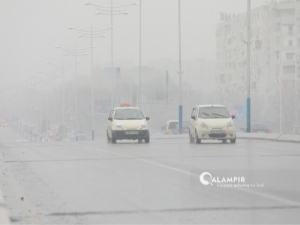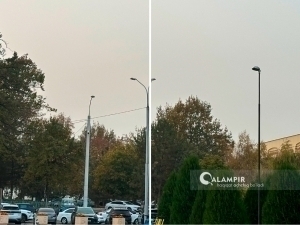Scorching May: How accurate are current temperature measurements in Uzbekistan?
Interviews
−
16 May 2025 26234 3 minutes
In recent days, the ambient temperature across Uzbekistan has risen significantly. Despite still being the final days of spring, the summer’s scorching heat is already being felt. This has led to questions: What is causing such anomalous warmth, and what can we expect in the coming week? QALAMPIR.UZ posed these questions to a hydrometeorology expert.
The Uzghydromet specialist explained that the intrusion of these warm air masses is caused by a thermal depression, a phenomenon mainly observed across Central Asia. As a result of this process, temperatures shoot up markedly. In desert areas and in the southern parts of the country, temperature readings are particularly high.
Starting May 14, a hot, high-pressure air mass began to move into the republic from the south. Following that, on May 15–16, it was reported that in most regions of Uzbekistan the daytime temperature climbed to between 39 and 41 °C. In some areas—especially in the south and desert zones—the temperature even reached 42–43 °C. Beginning May 17, however, the intense heat is expected to subside, leading to a drop in temperatures across much of the country, particularly in the northwestern regions. In contrast, in the central and northeastern parts, high temperatures are likely to persist with values potentially lowering to between 29 and 33 °C. In some localities, wind gusts may also intensify, reaching speeds of 20–22 m/s.
When QALAMPIR.UZ measured the outdoor temperature using a thermometer; readings above 45 °C were recorded. However, the information provided by Uzghydromet shows different values. Faced with these discrepancies, we consulted a specialist from the organization to determine which source is more reliable.
"There are well-defined standards for measuring air temperature. In accordance with regulations set by the World Meteorological Organization, air temperature is measured using a special thermometer housed in a protective box installed at a height of 2 meters above ground level. For the measurement to be accurate, the thermometer must not be influenced by external factors, such as the presence of tall buildings or trees," the expert clarified.
"When people claim that the ambient temperature has soared excessively high, they are sometimes referring to the temperature measured on a particular object rather than the standardized air temperature. Uzghydromet strictly adheres to the single, globally recognized measurement standard," he also noted.
Over the past ten years, nearly every May in Uzbekistan has been unusually hot. The hottest May on record was in 2001, when temperatures were 3–4 degrees above normal, while in the northwestern and desert regions, May 2021 saw temperatures 3.5–5 degrees above the norm. Conversely, the coldest May of this century was recorded in May 2003, with temperatures 2–3 degrees below normal, and historically the coldest May was in 1934, when temperatures were 4–6 degrees below the norm.
In May, the monthly precipitation is roughly one-third of that in March and April, and the number of rainy days is 2–3 times lower. Rainfall in May is typically short-lived and almost always accompanied by thunderstorms.




